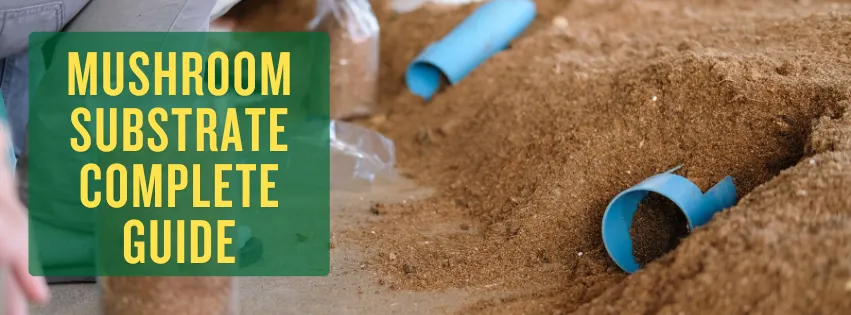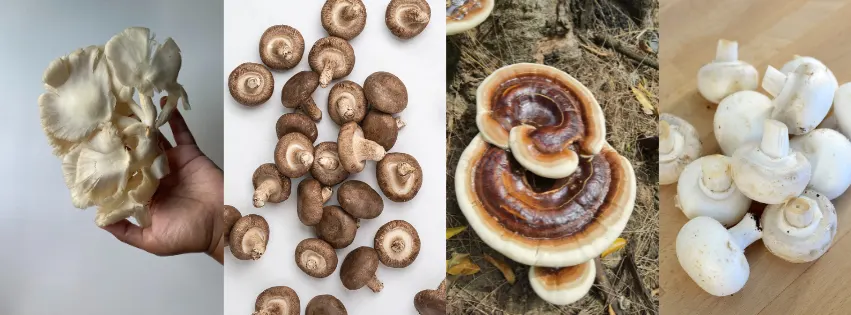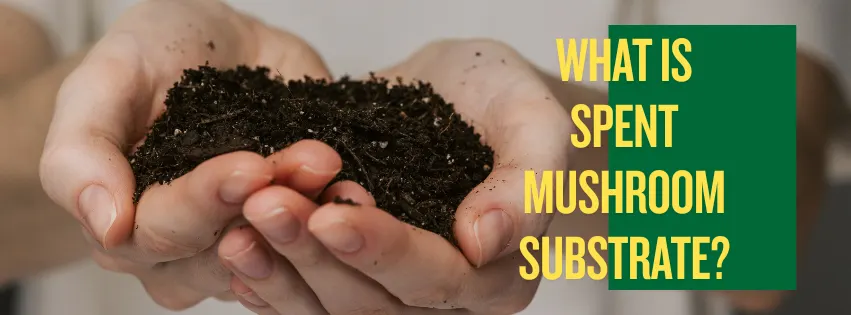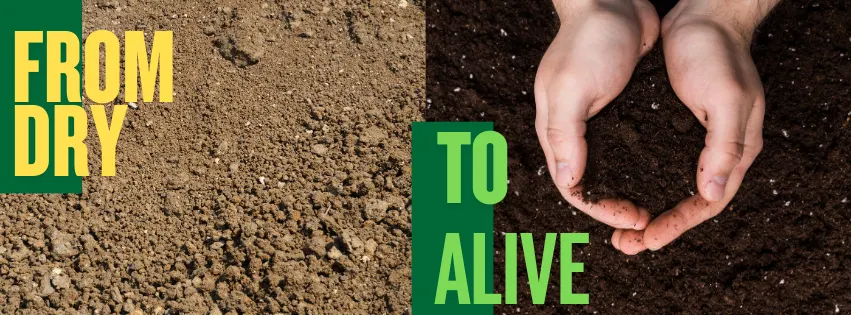
Mushroom cultivation is a fascinating journey. It begins with understanding the mushroom substrate. This guide will help you master it.
A mushroom substrate is the growing medium for mushrooms. It provides the nutrients they need to thrive. Choosing the right substrate is crucial.
Note: Don’t confuse mushroom substrate (the material used to grow mushrooms) with mushroom compost (the leftover after harvesting). This guide focuses on substrates for mushroom cultivation. To learn how spent substrate can be recycled in farming, see our Mushroom Compost Complete Guide.
Different mushrooms prefer different substrates. Straw, sawdust, and coffee grounds are popular choices. Each has its own benefits and challenges.
Preparing the substrate involves sterilization or pasteurization. This step is vital to prevent contamination. Proper preparation leads to successful mushroom growth.
Spent mushroom substrate is not waste. It can be recycled or used as compost. This adds value to your cultivation process.
Dive into this comprehensive guide. Learn how to optimize your mushroom growing substrate for the best results.
What Is a Mushroom Substrate?
A mushroom substrate is the bedrock of mushroom cultivation. It acts as the nutrition hub, providing the essential nutrients mushrooms need to grow.
Mushrooms obtain their nutrients through decomposition. Substrates, therefore, must be rich in organic materials for mushrooms to thrive. The breakdown of these materials facilitates mushroom growth.
Common Mushroom Substrate Components
Straw
Sawdust
Manure
Coffee grounds
Compost
Each type of substrate offers unique benefits. Some are better suited for specific mushroom species. Understanding the substrate’s role and composition is key to successful cultivation.
In India, paddy straw, wheat straw, and sugarcane bagasse are the most common mushroom substrates because they are cheap and widely available.
Mushroom substrates must be prepared with care. The right conditions help avoid contaminants that could hinder mushroom growth. The preparation process varies with substrate type.
Why the Right Mushroom Growing Medium Matters
Choosing the correct mushroom growing medium is vital for successful cultivation. It directly influences yield, quality, and growth rate of mushrooms.
Different substrates support different mushroom species. Using the ideal growing medium can significantly enhance the efficiency of mushroom farming. For instance, oyster mushrooms often flourish on straw, while shiitakes prefer hardwood.
Benefits of the Right Growing Medium
Enhanced mushroom quality
Improved yield
Faster growth rates
The growing medium also affects contamination risk. Properly chosen and prepared substrates create an environment less favorable to mold and pests. This reduction in contaminants is crucial for healthy mushroom development.
Types of Mushroom Substrates
Mushroom substrates vary in composition, each catering to specific mushroom species. Selecting the right type ensures optimal growth and yield.
Substrates include organic materials such as straw, sawdust, and coffee grounds. Each has its own benefits for particular mushrooms. Understanding these differences helps in choosing the right substrate for your cultivation needs.
Straw → Great for oyster mushrooms.
Sawdust & Wood Chips → Ideal for shiitake and other wood-loving mushrooms.
Coffee Grounds → Eco-friendly and nitrogen-rich.
Cardboard & Paper → Beginner-friendly option.
Logs & Hardwood → Long-term growth for shiitake and reishi.
Manure & Compost → Nutrient-rich, especially for button mushrooms.

Matching Substrates to Mushroom Species
Oyster Mushrooms: Straw, coffee grounds
Shiitake Mushrooms: Sawdust, logs
Button Mushrooms: Compost, manure
Matching your mushrooms with suitable substrates ensures not only healthy growth but also higher yields.
Key Factors for a Successful Mushroom Substrate
Moisture Content: Aim for 60–70%
pH Level: Best range is 5.5–6.5
Nutrient Balance: Can be boosted with bran or gypsum
Texture & Aeration: Loose texture prevents anaerobic conditions
Preparing and Conditioning Your Substrate
Steps:
Select a clean substrate
Adjust moisture levels
Ensure even nutrient distribution
Check regularly for contamination
Pasteurization Methods
Hot water bath
Steam pasteurization
Both reduce harmful microbes while keeping nutrients intact.
Sterilization Methods
Pressure cooker
Autoclave
Used for high-risk substrates like grains.
Supplementing and Mixing Substrates
Supplements like gypsum and bran can improve nutrition and boost yields. Mix evenly to avoid uneven growth.
Inoculating the Substrate
Steps:
Prepare substrate in a clean area
Open spawn bags carefully
Mix spawn evenly into substrate
Incubation and Environmental Control
Temperature: 70–75°F (21–24°C)
High humidity
Good ventilation
Troubleshooting Common Substrate Issues
Overwatering → leads to anaerobic conditions
Mold contamination → poor sterilization
Inconsistent temperature → slows colonization
Spent Mushroom Substrate: Uses and Disposal
Once used, substrates still have value:
Compost for gardens
Soil conditioner in farms
Organic material for animal feed
This reduces waste and adds economic value.
Tips for Substrate Success and Innovation
Experiment with different substrate mixes
Use organic inputs for better quality mushrooms
Monitor moisture and pH regularly
Recycle spent substrates responsibly
Frequently Asked Questions
1. What is the best substrate for growing mushrooms?
Depends on species. Straw for oysters, hardwood for shiitake, compost for button mushrooms.
2. How do I prevent contamination?
Use proper pasteurization or sterilization and maintain cleanliness during inoculation.
3. Can I reuse spent mushroom substrate?
Yes. It can be composted or used as fertilizer for gardens and fields.
4. How do I know if my substrate is ready?
It should have even moisture, uniform color, and a clean smell.
Understanding and preparing the right mushroom substrate is the foundation of successful mushroom cultivation. Whether you are a beginner or an experienced grower, mastering substrates leads to better yields and healthier crops.
Don’t forget: Once a substrate is spent, it becomes mushroom compost, a valuable soil improver for farms and gardens. To learn more, check out our Mushroom Compost Complete Guide.


